- Finance
-
Equipment
- Beverage
- Coffee
-
Cooking
- Shop all cooking
- Bratt pans
- Char grills
- Chicken rotisseries
- Combi ovens
- Contact grills
- Convection ovens
- Conveyor toasters
- Cooktop oven combos
- Cooktops
- Deck ovens
- Fryers and oil filters
- Griddles
- Kebab machines
- Microwaves
- Pasta cookers
- Pizza ovens
- Range ovens
- Rice cookers
- Salamander grills
- Sous vide
- Speed ovens
- Tandoor ovens
- Toaster grills
- Waffle makers
- Wok burners
- Other
- Dishwashers
- Food display
- Food preparation
- Furniture
-
Refrigeration
- Shop all refrigeration
- Blast chillers
- Chest freezers
- Countertop fridges
- Display freezers
- Display fridges
- Gelato freezers
- Ice-cream machines
- Ice machines
- Pizza prep fridges
- Refrigerated drawers
- Sandwich prep fridges
- Slushie machines
- Under counter freezers
- Under counter fridges
- Upright freezers
- Upright fridges
- Other
- Stainless steel
- Hot deals
- Shop all equipment
- Customers
- Become a Partner
- About Us
Share
Best Commercial Ice Machines: Buyer’s Guide
article
What’s inside this buyer’s guide
- Introduction
- Types of commercial ice machines
- Things to consider before purchase
- Commercial ice machines vs. commercial shaved ice machines
- Best makes of commercial ice machines
- Used commercial ice machines — worth considering?
- Frequently asked questions
- Commercial ice machine glossary
- Keep your cash; use ours!
Nothing beats the satisfaction of serving your customers with ice-cold drinks and fresh food, and nothing makes it easier than a commercial ice machine.
A commercial ice machine is not just a convenience; it’s a necessity for any restaurant that wants to stay ahead of the competition.
Whether you need ice for beverages, food preparation or keeping perishable items fresh, a commercial ice machine can produce it in large quantities, efficiently and reliably.
But with so many options available, how do you choose the best one for your restaurant or bar? That’s where this guide comes in.
We have done the hard work for you and researched and reviewed the best commercial ice machines in New Zealand based on customer feedback, expert opinions, and industry standards.
Types of commercial ice machines
Commercial ice machines come in different types, each with its own purpose. Some make perfect cubes for drinks, others produce flake ice for food displays.
We’ll be looking at five main types of these machines, discussing their benefits and considerations to help you make the best choice for your business.
Modular ice machines
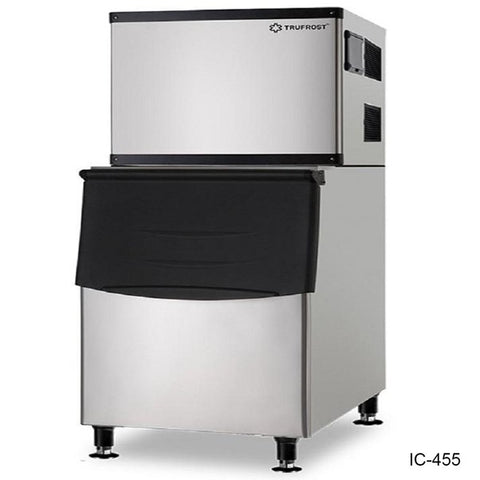
Modular ice machines are versatile and efficient appliances designed to produce large quantities of ice.
They consist of two separate units: the ice-making unit that sits on top and an ice storage bin or dispenser underneath.
Benefits
- High production: Modular ice machines typically have a high production capacity, making them ideal for businesses that have a high demand for ice.
- Versatility: The separate ice-making and storage components allow for a mix-and-match approach. You can choose a bin or dispenser that best fits your capacity needs and space constraints.
- Upgrade ease: As your business grows, you can easily upgrade the ice-making unit without having to replace the entire system.
Considerations
- Space requirements: Modular units, especially those with high production capacities, can be quite large. You’ll need to ensure you have enough space not only for the machine itself but also for ventilation around it.
- Installation: These machines may require professional installation to ensure proper water, power, and drainage connections.
- Maintenance: Modular units require regular cleaning and maintenance. However, their design allows for easier access to components compared to self-contained units.
Countertop ice machines
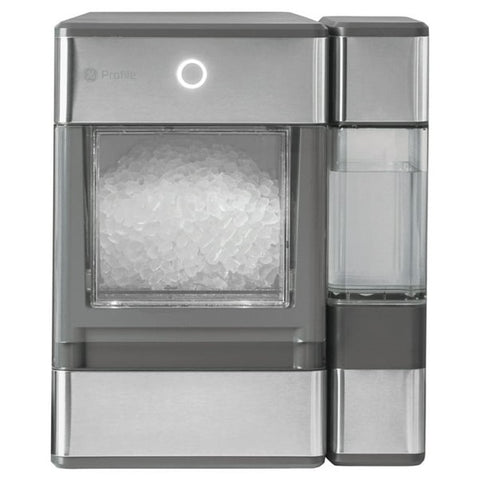
Countertop ice machines are compact units that pack a punch.
They are designed to fit snugly on most countertops, making them a great choice for kitchens where space is a constraint.
Benefits
- Space-saving design: These machines are designed to fit on most countertops. Best suited for commercial kitchens with limited space.
- Efficient output: Despite their compact size, these machines can produce a significant amount of ice, ensuring you never run out during peak business hours.
- Versatility: Whether you need a full cube for cocktails, a half cube for soft drinks, a nugget for smoothies, or flakes for food display - countertop ice machines have got you covered.
Considerations
- Placement: These machines need to be placed near a water source and drain. So, you’ll need to ensure you have the necessary plumbing in place.
- Maintenance: Regular cleaning and maintenance are required to keep these machines running efficiently.
Undercounter ice machines
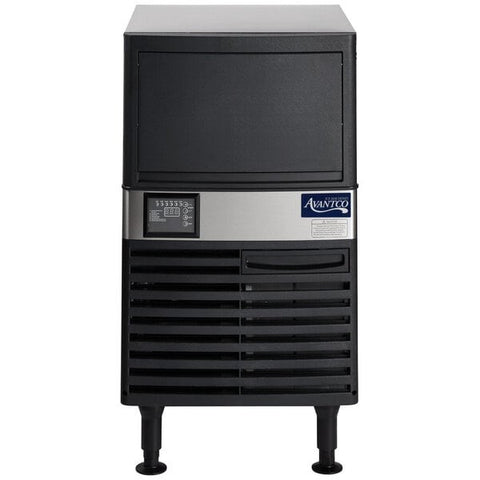
Undercounter ice machines are a convenient solution for businesses that need a steady supply of ice but have limited space.
These machines are designed to fit under standard-height counters, providing a seamless look while maintaining functionality.
Benefits
- Integrated design: Undercounter ice machines blend into your existing kitchen layout, providing a streamlined and professional look.
- Noise reduction: As these machines are often enclosed by cabinetry, they can help reduce operational noise, contributing to a quieter kitchen environment.
- Ease of access: The undercounter design allows for easy access to ice without the need to reach overhead or walk to a separate area, improving efficiency in the kitchen.
Considerations
- Installation requirements: Undercounter ice machines may require more complex installation procedures compared to countertop models, including provisions for plumbing and ventilation.
- Capacity: While undercounter models are space-efficient, they may not have the same ice production capacity as larger, freestanding units. It’s important to choose a model that can meet your establishment’s ice demands.
- Cleaning and maintenance: Undercounter models may be more difficult to clean and maintain due to their integrated design. Regular maintenance is crucial to ensure the longevity and efficiency of the machine.
Ice dispensers
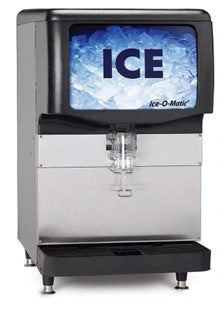
Ice dispensers are specialised machines designed to dispense ice directly into a container, such as a glass, bucket, or cooler.
They are commonly found in restaurants where customers or staff can serve themselves ice.
Benefits
- Convenience: Ice dispensers allow for quick and easy access to ice without the need for scooping. This can be particularly beneficial in self-service scenarios.
- Hygiene: As the ice is dispensed directly into the container, the risk of cross-contamination from hands or scoops is significantly reduced.
- Controlled Portions: Many ice dispensers come with portion control settings, allowing you to regulate the amount of ice dispensed and reduce waste.
Considerations
- Power Consumption: Ice dispensers typically use more energy than standard ice machines due to the additional mechanics involved in dispensing ice.
- Maintenance: The dispensing mechanism can sometimes become clogged or require regular cleaning to maintain hygiene standards.
- Cost: Ice dispensers can be more expensive than traditional ice machines due to their added functionality. It’s important to consider whether the benefits outweigh the additional cost for your specific needs.
Things to consider when buying a commercial ice machine
Choosing a commercial ice machine is about finding a balance between your business needs and the features of the machine.
While it might seem simple, the right ice machine can enhance operational efficiency and customer satisfaction.
So, let’s dive into the key considerations to guide you in making an informed decision.
Styles of ice
When it comes to ice, there’s more than meets the eye.
From the swanky cubes clinking in a top-shelf whiskey to the flaky goodness in a snow cone, ice is as diverse as the drinks it cools.
So, when you’re on the hunt for the perfect commercial ice maker for your business, the first thing to consider is what style of ice suits your offerings.
This isn’t just a trivial decision like choosing a colour for your napkins.
It’s a game-changer that could make or break your business’s profitability.
So, let’s break the ice and look at some common styles:
Full cubes

They chill drinks fast and melt slower than their smaller or crushed mates.
And don’t forget, ice isn’t just for drinks.
If you’re sending frozen goods for delivery or shipment, full cubes are your best choice.
Flake ice
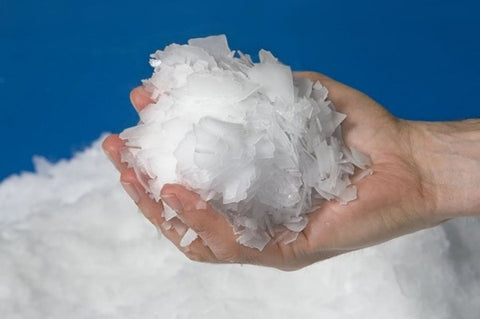
The star of edible ice-based treats and desserts like snow cones.
Flake ice is also great for making blended drinks and will hold onto the flavour of your beverage or dessert.
It also makes a comfy bed for serving chilled foods such as oysters and other seafood.
Nugget ice

Don’t let its resemblance to crushed ice fool you.
Nugget ice is actually made from compacted flaked ice, making it more chewable than many other styles of ice - it’s like the bubble wrap of the ice world!
This makes it particularly good for use in ice-based cocktails such as margaritas.
Gourmet ice
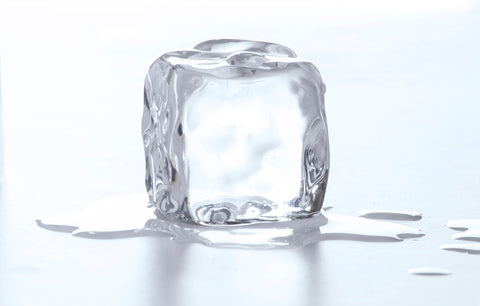
The trendsetter of the ice world.
These large single cubes or spheres are often used to serve high-quality spirits.
They add a touch of class to any glass, and their slow melting rate ensures your carefully crafted spirit isn’t diluted.
Tube ice
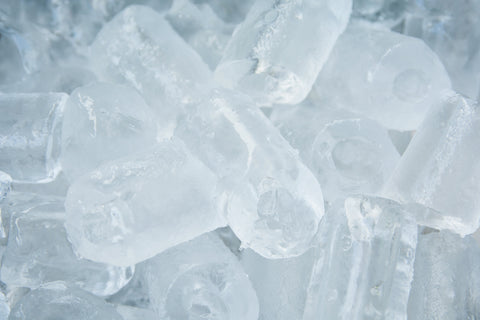
Tube ice is shaped like a cylinder with a hollow core - think of it as the doughnut of the ice world!
Its slower melting rate makes it great for transportation, and is often used for industrial applications.
Plus, depending on your machine’s quality, tube ice can be more energy-efficient to produce.
Cooling method
The temperature in your establishment can have a significant impact on your commercial ice maker’s performance.
All ice machines need a bit of a chill to prevent the condenser from throwing a tantrum (overheating), and this can become a pressing issue in particularly warm environments.
There are several cooling methods that commercial ice machines employ to produce ice.
Each method has its unique advantages and disadvantages, so it’s crucial to consider where your machine will be operating to select the most suitable cooling method.
Air-cooled commercial ice machine
Air-cooled ice machines are often the preferred choice.
They utilise built-in fans to cool the machine and ensure optimal performance.
They’re straightforward to install and maintain, but they do require adequate ventilation.
Therefore, you’ll need to ensure there is sufficient space around the machine’s vents.
This can be a challenge if space is limited in your venue or in environments with a high ambient temperature.
Water-cooled commercial ice machine
Water-cooled ice machines circulate water around the condenser to keep the machine cool.
These machines are more complex to install as they require a source of cool water.
They also tend to consume more water than air-cooled machines.
However, they can be a better option if you can’t provide sufficient ventilation space around the machine or for use in particularly hot environments.
Remote-condenser commercial ice machine
These machines differ from air-cooled and water-cooled ice machines in that they separate the condenser from the machine.
The condenser often sits outside the building or in a separate room.
These machines are more costly and challenging to install, but they tend to consume less energy and operate quieter than air-cooled and water-cooled alternatives.
Water quality and filtration
The water quality that goes into your commercial ice machine can affect its performance and reliability a lot.
This is because of the minerals in our water that can slowly build up in ice machines over time.
These mineral deposits can make your ice machine use more energy, make oddly shaped ice, or eventually break down.
Choosing a commercial ice maker with a great built-in water filter can help stop this mineral build-up, ensuring the machine’s efficiency and long-term performance.
But water filters aren’t everlasting.
You’ll need to check and change the water filter regularly to keep the best performance.
Or, you can decide to filter the water before it goes into the ice machine.
You’ll have to buy and install the external filter, but this gives you the option of choosing a better filter than the built-in one that comes with your ice machine.
Always make sure any external water filter you install works with your ice machine and doesn’t cancel the manufacturer’s warranty.
Drainage
A commercial ice machine produces a lot of wastewater, mostly from the compressor’s condensation.
This water has to be drained properly from your commercial ice machine.
If the machine is higher than the drain point, then a simple gravity drain system is enough.
But if the machine is lower than the drain point, you’ll need a drain pump to get rid of the wastewater.
Some manufacturers provide drain pumps as an extra accessory you can buy, but remember that it is another part that will need maintenance and is prone to malfunctions.
Regardless of your chosen drainage system, it’s important to maintain an air gap between your ice machine’s drain endpoint and your commercial kitchen’s drain access point.
This gap is crucial in preventing any backflow of sewer water into your commercial ice maker or ice bin in the event of a floor drain issue.
Ice bin selection
Selecting the right ice bin for your commercial ice machine is essential, as it should integrate seamlessly into your daily operations.
Here are some key aspects to consider when choosing a commercial ice machine:
Ice bin capacity
Ice bins are usually measured by the maximum amount of ice they can hold when filled to the top.
Ice makers often have an automatic shut-off switch that stops the bin from overfilling.
However, ice that heaps up into a peak can set off the automatic shut-off even though there is technically more storage space in the bin.
To fix this, make sure your ice bin is in the right spot under the ice-maker.
Keep an eye on the feeler arm and water pressure, and don’t forget to check the water line, inlet valve, thermostat, and filter regularly.
If all this sounds a bit tricky, don’t hesitate to call a professional.
Bin’s exterior, foam insulation, and interior lining
The outer, inner, and foam layers of an ice bin are important factors to look at.
The inner layer of an ice bin is made to be waterproof.
Melted ice water should never leak through the foam layer and behind the outer layer of the ice machine.
If you notice any leakage or other issues, it’s a sign that something’s not right.
Don’t ignore it - it’s time to call in a professional for help or consider getting a new ice machine.
Alternatively, if you’re looking for a flexible option, SilverChef provides a Rent-Try-Buy solution for commercial ice machines in New Zealand.
External damage and structural damage
Commercial ice storage bins can get damaged from regular use.
Even the toughest ice bins can have holes or cracks that can make them lose their insulation of your ice supply.
If you find any openings in the outside of the ice machine, you should think about replacing your ice bin.
Rust or corrosion
If you see any rust or corrosion on the outside of the ice machine, it probably means there is a leak somewhere.
Corrosion can make the insulation more wet, which can damage your bin’s ability to keep your ice supply cold.
If you notice this, it’s not something to brush off. Get a professional to check it out. They will help you assess the situation and provide the best solution for your needs.
Maintenance and servicing
Your ice machine is an essential part of your restaurant.
To keep it running smoothly, you need to take care of it regularly.
Here are some tips to follow:
- Hire a technician once a year: A professional can clean your ice machine thoroughly, remove any bacteria or mold, replace the refrigerant, and check if everything is working properly.
- Change the water filter every six months: The water filter prevents minerals and impurities from clogging your ice machine. If your water is hard or has a lot of minerals, you may need to change it more often.
- Clean the air filter frequently: The air filter keeps dust and dirt from entering your ice machine. If it gets dirty, it can reduce the airflow and cause your machine to overheat. You should clean it at least once a month or more depending on how dusty your environment is.
- Choose an easy-to-maintain ice machine: Some ice machines are designed to make maintenance easier. Look for ones that have water and air filters that are easy to access and replace. You should also check the temperature, controls, wiring, fasteners, external filter system, and inlet water valve screens to spot any problems and fix them before they get worse.
Commercial ice maker vs commercial shaved ice machine
If you want to offer your customers delicious icy treats like snow cones, slushies, or blended cocktails, you need to know the difference between a commercial ice maker and a commercial shaved ice machine.
These are two distinct types of equipment that have different functions and features.
A commercial ice maker is a device that can produce and store ice cubes or nuggets of various sizes and shapes.
You can use these ice pieces for cooling drinks, preserving food, or making ice sculptures.
A commercial ice maker can produce anywhere from 23 to 1360 kilograms of ice per day, depending on the model and size.
It requires a water supply, a drain, and a power outlet to operate.
A commercial shaved ice machine is a device that can shave pre-made ice cubes or blocks into fine flakes that resemble snow. You can use these flakes to make shaved ice desserts with flavoured syrups, toppings, or mix-ins.
It can shave up to 2.7 kilograms of ice per minute, depending on the model and power. It does not require a water supply or a drain, but it does need a power outlet to operate.
The table below summarises the main differences between a commercial ice maker and a commercial shaved ice machine:
|
Feature |
Commercial ice maker |
Commercial shaved ice machine |
|
Function |
Produces and stores ice cubes or nuggets |
Shaves pre-made ice cubes or blocks into fine flakes |
|
Use |
Cooling drinks, preserving food, making ice sculptures |
Making shaved ice desserts with syrups, toppings, or mix-ins |
|
Ice output |
23 to 1360 kilograms per day |
Up to 2.7 kilograms per minute |
|
Water supply |
Required |
Not required |
|
Drain |
Required |
Not required |
|
Power outlet |
Required |
Required |
|
Freezer or cooler |
Not required |
Required |
|
Cleaning and maintenance |
Regular |
Minimal |
Best makes of commercial ice machines
Polar

For over 15 years, Polar Refrigeration has been a trusted brand among commercial caterers worldwide, offering a diverse range of high quality products at excellent price points. Their commercial ice machines, in particular, are well-regarded for their variety of outputs tailored to suit various needs.
In New Zealand, Polar is a preferred choice for commercial ice machines, thanks to its user-friendly design, easy-to-clean construction, and sturdy adjustable feet for effortless positioning.
Among their offerings, the Polar G-Series Countertop Ice Machines stand out. The 50kg Output model is a countertop machine that dispenses soft bullet-shaped ice and includes an internal drain pump as standard.
It also features a simple manual defrost function to ensure optimal performance. Similarly, the 20kg model dispenses soft bullet-shaped ice and boasts a time-saving, easy-clean construction along with a simple manual defrost function.
Both models necessitate plumbing into a mains water connection for continuous ice production, making them an ideal choice for businesses requiring a steady supply of ice.
Shop Polar commercial ice machines now
Electrolux

Electrolux Professional, a worldwide authority in commercial kitchen solutions, is known for its efficient and reliable range of commercial ice machines. These machines are especially favoured in New Zealand due to their compact size, making them an excellent choice for locations with limited space.
Among their offerings, the Cube Ice Machine 65kg/24hr with 40kg Bin and the Cube Ice Machine 28kg/24hr with 9kg Bin stand out.
The former is an air-cooled ice maker that can produce 65kg of ice per day and comes with a 40kg bin. It uses a spray system to create crystalline, compact, and hygienically pure ice cubes that are slow to melt.
The machine’s exterior is made of AISI 304 stainless steel, and it features an efficient air cooling system.
The latter model, the Cube Ice Machine 28kg/24hr with 9kg Bin, is a self-contained, water-cooled ice maker. It can produce 28kg of ice per day and comes with a 9kg bin.
Similar to the previous model, it also uses a spray system to produce solid, crystal-clear ice cubes. Both models are fully automatic and suitable for gravity drain only, making them an ideal choice for businesses requiring a consistent supply of ice.
Shop Electrolux commercial ice machines now.
ITV

ITV Ice Makers, a distinguished name in the commercial ice machine sector, is celebrated for its innovative design and efficient performance. Their products are recognised for their quality and reliability, making them a popular choice in the industry.
Two standout models from their range are the ITV GALA NG80, 80kg and the ITV ALFA NDP20, 24kg.
The GALA NG80 A model, with its capacity to produce 75kg of crystal-clear ice per day, is environmentally friendly due to its use of R290 Hydrocarbon natural refrigerant. This model is particularly favoured for high-end scotch and whiskey servings as its slow-melting GALA ice cubes do not alter the drink’s flavour or water it down excessively. It also boasts a convenient built-in ice storage capacity of 35kg.
The ALFA NDP20 A model, on the other hand, is a compact ice cube maker capable of producing 23kg of crystal-clear ALFA ice cubes per day.
This model is perfect for small bars and cafes due to its 6kg built-in ice storage capacity and its suitability for very hot climates (ambient temperatures up to 43°C).
Both models utilise a patented spray system to ensure the production of crystal clear ice every time, making them an excellent choice for businesses requiring a steady supply of ice.
Shop ITV commercial ice machines now
Manitowoc Ice

Since its inception in 1964, Manitowoc Ice, a division of Manitowoc, Inc., has been a pioneer in innovation, sanitation, and efficiency.
The company’s commitment to facilitating an effortless workflow in the kitchen is evident in its thoughtful engineering and streamlined designs.
With a diverse and versatile portfolio, Manitowoc Ice offers solutions ranging from modular systems to remotely-controlled units.
Two standout products from their range are the Manitowoc Indigo Air-Cooled Ice Maker iT500 and the iYT0900.
The iT500 is perfect for businesses where ice plays a crucial role. It can produce up to approximately 227 kilograms of clear, regular-sized ice cubes daily.
Equipped with an acoustical ice sensing probe and Alpha-San anti-microbial protection, this ice machine is easy to own and economical to operate due to its enhanced cleanability and programmability.
The iYT0900 model, on the other hand, is designed for restaurants with moderate ice demand. It can produce approximately 392 kilograms of half-dice ice in 24 hours.
Its reliable air-cooled condenser system operates with minimal fuss and low water usage. Both models utilise a patented spray system to consistently produce crystal clear ice, making them an excellent choice for businesses requiring a steady supply of ice.
Shop Manitowoc Ice commercial ice machines now.
Ice-o-matic

Established in 1952 by Dave Smith, Ice-O-Matic has been dedicated to the development, enhancement, and perfection of ice-making.
With a focus on top-quality ice, the company offers simple, reliable, and user-friendly commercial ice machines. Its commitment to innovation and quality makes Ice-O-Matic a great choice for commercial ice machines in New Zealand.
Among their offerings, the GEM Series Pearl Ice® Machines and the ICE Series Cube Ice Machines stand out.
The GEM Series is favoured for its soft, long-lasting, and chewable Pearl Ice. It dispenses smoothly, blends quickly, and displaces liquid better than any other ice. Additionally, the machines in this series feature a load-monitoring system that continuously checks the workload on the gearbox, preventing problems before they develop.
Conversely, the ICE Series Cube Ice Machines are renowned for their durable cube ice. Constructed from robust stainless steel, these machines feature an energy-efficient Harvest Assist system that ensures consistent production around the clock.
Both series offer high volumes of crystal-clear ice, making them an ideal choice for any food service or hospitality application in New Zealand.
Shop Ice-o-matic commercial ice machines now
Used commercial ice machine — worth considering?
Spending thousands of dollars on a new commercial ice machine can put a strain on your budget and cash flow.
If you’d prefer not to invest a lot of money in an ice machine, a cheaper, pre-owned appliance might be the solution you’re looking for.
SilverChef’s range of ‘Certified Used’ commercial equipment is mostly ex-rental equipment sourced from businesses we know and trust.
The equipment is typically less than two-and-a-half years old, has been fully refurbished by us, and is backed by a three-month parts-and-labour warranty.
Considering the effective or useful life of an ice machine is much longer, you can be sure our Certified Used commercial ice machines have plenty of life left in it.
You can either buy or finance the ‘Certified Used’ (and clearance) equipment on our website. (We’re one of the few financiers, if not the only one, in New Zealand that funds second-hand commercial kitchen equipment).
Read more about ‘Certified Used’ equipment
Frequently asked questions
How do commercial ice machines work?
Commercial ice machines operate by circulating water over a refrigerated surface, causing it to freeze into ice.
Once the ice is formed, it’s harvested and moved into a storage bin for use.
This cycle continues until the storage bin is full.
The machine then stops producing ice until some is removed from the bin, making room for more.
This automated process ensures a constant supply of ice without manual intervention.
How to clean a commercial ice machine?
Cleaning a commercial ice machine involves several steps:
- Remove the ice: The first step is to remove all the ice from the machine. You can store this ice in a freezer or cooler while you clean.
- Set the machine to clean: If your machine has a cleaning mode, set it to this mode.
- Prepare cleaning solution: Mix a solution of vinegar and water, typically 1 part vinegar to 10 parts water.
- Clean the machine: Use the vinegar and water mixture to clean all parts of the ice machine. This includes the path that water takes when it runs through the machine.
- Rinse and dry: After cleaning, rinse all parts with clean water and let them air dry.
- Restart the machine: Plug the machine back in and restart the ice maker. Discard the first batch of ice that is made after cleaning
How long does a commercial ice machine last?
A standard commercial ice machine typically lasts for about 4-5 years.
However, with regular cleaning and maintenance, its lifespan can be extended to over 10 years.
Some factors that can affect the lifespan of a commercial ice machine include the brand of the equipment, the quality of the water used, the ambient conditions where it’s installed, and how well it’s maintained.
It’s worth noting that some machines can last anywhere from 7 to 10 years under optimal conditions.
What is a commercial shaved ice machine?
A commercial shaved ice machine makes shaved ice, a frozen dessert with fine ice and syrups.
It is softer and smoother than snow cones, which have crushed ice.
These machines can serve many customers fast and are great for businesses or events that sell shaved ice.
There are three types of machines: block, cube, and crusher/shaver.
You should consider the capacity and power of the machine, as well as the quality and consistency of the shaved ice.
Commercial ice machine glossary
Understanding the technical terms is an essential step in your quest for the perfect commercial ice machine.
If you’re unsure about the difference between a condenser and a machine head, these explanations should help:
Air Filter
This is used in air-cooled machines to eliminate particles from the incoming air that could potentially clog the machine.
Beverage volume
This refers to the quantity of liquid that can be poured into a glass once ice has been added.
Condenser
This component transforms liquid refrigerant into gas during the cooling process.
Drainage point
This is where the drainage line is located, which removes wastewater from the ice machine.
Ice holder
This is the vessel linked to the ice machine that collects and retains the ice.
Ice formation unit
This is the component of the ice maker that solidifies water to form ice.
Dissolution time
This term refers to the duration it takes for an ice product to dissolve.
Maximum ice output
This is the greatest quantity of ice a machine can generate at once.
Cooling agent
This is a compound that oscillates between a liquid and gaseous state during the refrigeration cycle.
Purity enhancer
This built-in filter eliminates impurities from water as it’s channelled into the machine.
Keep your cash, use ours!
We hope this guide has helped you better understand what you need to look for in a commercial ice machine and how to choose the right model for your needs.
If you want to know more, you can always reach out to the SilverChef team.
Hospitality equipment can be expensive, and paying for it outright can put pressure on your business’s cash flow.
Our finance solutions allow you to get the equipment you want now and to pay for it in small, regular amounts out of the revenue it generates for you.
Rent–Try–Buy® not only helps you maintain your cash flow, it gives you unrivalled flexibility to adapt your equipment to the changing needs of your business.
You can upgrade or buy the equipment at any time or, after 12 months, return or continue renting it.
If you decide to buy the equipment, we’ll give you back 50% of the rent you paid in the first year and 25% of any rental payments thereafter — to put toward the purchase price.
